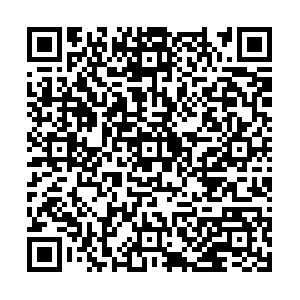18世纪唐通事眼中的中日贸易与长崎社会—新见抄本《琼浦闲谈》研究
Sino-Japanese Trade and Nagasaki Society Observed by a Tōtsūji in 18th Century:
-
摘要: 域外汉籍是推进东亚海域史研究的重要史料来源。日本东北大学附属图书馆收藏的《琼浦闲谈》,是一册迄今尚未受到学界关注的珍稀抄本。该书成于唐通事之手,生动地状摹了18世纪的中日贸易与长崎社会实态。研究发现:《琼浦闲谈》所述具有特别的史料价值,由此应充分重视活跃于长崎的福州府属人群之乡土背景。具体说来,江户时代在长崎的不同人群之信仰彼此交融,既有中国人对日本神明之借用,又有中国各类信仰崇拜移植日本的更多例子。除了人们习知的儒家圣堂(孔庙)、妈祖信仰、佛教黄檗文化之外,道教系统之“九使”信仰在长崎的影响亦值得特别关注−“九使”由原乡福清的荒洞蟒神到东亚海域史上舍生取义之林姓神明,“九使”信仰从福州府属庶民之“九使诞”俗以及府城倡门邪神崇拜再到融入长崎盛大的诹访神事活动,其间的嬗变轨迹,彰显了东亚海域跨文化风俗传播的复杂性与丰富内涵。透过对福州府土神“九使”与长崎诹访神社信仰之渊源等的分析,可以管窥传统时代中国文化的传播及其相关影响。Abstract: Overseas Chinese Classics are important historical sources for advancing the study of East Asian maritime history. The QiongpuXiantan (《琼浦闲谈》, the Anecdote of Nagasaki) collected by Tohoku University Library is a rare manuscript that has not yet drawn the attention of academia. The book, written by a Tōtsūji (通事, the Chinese translator in Nagasaki trade), vividly depicts the Sino-Japanese trade and the social life of Nagasaki in 18th century. At first, this paper explores the compilation process of QiongpuXiantan. Then, by comparing the book with another Nagasaki Tsujisho (mandarin textbooks compiled and used by Tōtsūji), QiongpuJiahua (the Story of Nagasaki), this paper aims to outline several social aspects of the trade, Chinese activities, customs and culture in Nagasaki. In particular, this article delineates the spread of Chinese culture and its influences by analyzing the origin of the “Jiushi” belief (“九使” , the ninth messenger, one of the local gods in Fuzhou Prefecture) and the Suwa Shrine in Nagasaki during the traditional time. The thesis points out that the narrations in QiongpuXiantan have unique historical value, and we should pay full attention to the local background of people from Fuzhou who played active roles in Nagasaki. Specifically, different beliefs, namely the belief borrowed from Japanese gods and various Chinese religions transplanted in Nagasaki during the Edo period, blended. In addition to the well-known Confucianism, Mazu belief, and Buddhist culture (the school of Huangbo), the influence of “Jiushi” (one of the Taoist deities) in Nagasaki also deserves special attention. From the Boa God in the remote cave originated from Fuqing County to the God Lin narrated in East Asian history as the one who sacrificed his life for justice, from the local custom of “Jiushidan” (“九使诞” , the birthday of the ninth messenger) and the belief of evil gods worshipped by brothels in Fuzhou City to the grand sacred events centered on the Suwa Shrine, such transitions of “Jiushi” belief highlight the complexity and rich connotation of cross-cultural communication in East Asia.
-
Key words:
- QiongpuXiantan /
- Tōtsūji /
- the trade in Nagasaki /
- Jiushi /
- Suwa Shrine
-
表 1 明清民国时期东南地区九使宫(庙)分布状况
年代 地点 事迹 文献出处 明 长乐县 九使宫在二十都潮印寺后,与黄檗山隔江相对,灵感特甚。正德三年创,万历四十三年里人陈春霆募缘营拓,屋宇轩厂[敞]。 崇祯《长乐县志》卷5《祀典志》,民国《长乐县志》卷7《名胜》 明万历以前 侯官县高盖山下 九使庙 《榕阴新检》卷9《妖怪》 明末清初 平潭县 九使宫,一在北海区汜湖边村东北棋盘山下,建自清初;一名西宫,在湖南村西,建自明末清初,民国四年里人重修;一在敖网区大使坑村后;一在屿头岛万叟村湾漕底。 民国《平潭县志》卷8《名胜志》,另见该书卷4《山川志》。 清初顺康年间 福清县黄檗山 九使宫,在黄檗山。 日本宽文刻本《福清县志续略》卷1《祀典》 清康熙 福州城 迟维城,汉军正白旗人,康熙三十六年任福建福州府知府,刚决善断。闽俗尚鬼,多淫祠……又有所谓齐天大圣、九使等庙,维城痛惩其弊,力请大吏禁止。 雍正《八旗通志》卷233《循吏传上》 福州府 督闽未数载,即黜闯神、罢太保,治奉淫者以法。近又尽毁齐天、五帝、九使等庙,遐迩闻者,咸啧啧执事胆识,与胡、狄二公后先媲美。 [清]蔡衍鎤撰:《上郭制府请罢淫祀书》,见《操斋集》卷3《文部》 福鼎县 九使庙,在秦屿后澳,康熙乙酉里民高洪声等建。 乾隆《福宁府志》卷34《福鼎坛庙》 乾隆 福州马江 罗星塔汛在马江中,当省会要冲,抚标轮防,设炮台一,哨船四,内江水面,上至九使庙,对江七娘宫界…… 乾隆《福州府志》卷13《海防》,民国《闽侯县志》卷52《海防》 福鼎县 黄崎山居民海面[面海?]而栖, 有九使宫。 乾隆《福宁府志》卷4上《福鼎山川》 霞浦县 九使庙,原在道前街遵善境,今徙建于东郊。(九月初九日诞,里人祭之。) 乾隆《福宁府志》卷34《霞浦坛庙》。民国《霞浦县志》卷7《建筑》、卷24《祠祀》也有记载 九使庙,……一在三沙一甲境,清乾隆间囗,嘉庆十年里人倡捐修。九月初九日诞,里人祀之。 民国《霞浦县志》卷24《祠祀》。 福州城 会城最多淫祀,诸姬家尚有一种邪鬼,曰狗使,凡祀之此鬼之家,客与其家人狎,辄迷恋不悟。 张际亮《南浦秋波录》卷3《习俗记》、《岁时记》 光绪 浙江玉环厅 双峰牌山……旁建青峰庙(即九使侯王庙) 光绪《玉环厅志》卷1下《舆地》。该书卷6《祠祀》另载:“九使庙,在陈澳,一作青峰庙,祈雨辄应。”卷14《杂记》亦有记载 清 连江县 幸无与五帝、齐天、九使同类并视之。 民国《连江县志》卷21《祠祀》 民国 平潭县 道彰古岩……殿前有石洞,从地透下,深不可测,俗呼九使洞,相传可通隔海大练岛。 民国《平潭县志》卷8《名胜志》 -



 下载:
下载:





 沪公网安备 31010102003103号
沪公网安备 31010102003103号